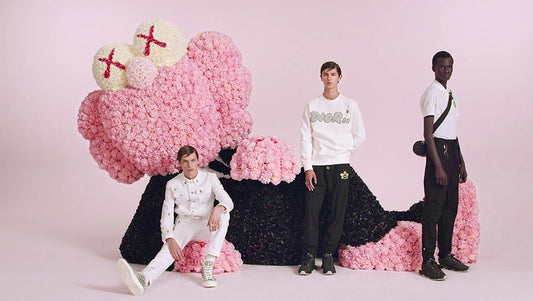Known for his dystopian surrealist paintings that will send a chill down your spine, Polish painter Zdzisław Beksiński is often called “The Nightmare Artist.” With an insistence on not assigning any meaning or titles to his unique, disquieting works, Beksiński is a fascinating figure who, in recent years, has gained a small cult following worldwide.
Several YouTube video essayists have published their takes on Beksiński’s paintings concerning horror art. But how did Beksiński view his creations, and what led to the “fantastic period” in his artistic career during which he completed these horrifying pieces?
Who Was “The Nightmare Artist”?
Zdzisław Beksiński was born on February 24, 1929, in Sanok, Poland, and died in Warsaw on February 21, 2005. Throughout his childhood and adolescence, he survived and bore witness to the horrors of WWII and the occupation of both Nazi Germany and the Soviet Union in his country. Themes of war, death, anxiety, and isolation are undoubtedly present within his most iconic paintings done during his adulthood.
After the war, Beksiński studied architecture at Kraków Polytechnic from 1947 to 1952. Upon graduating from university, Beksiński became a construction site supervisor in Sanok when he returned in 1955. Quickly realizing he disliked the construction site job, he turned to art, creating montage photography, sculpture, and traditional paintings.

Interestingly, Beksiński never received any formal artistic training during his life. During the early days of his creative endeavors, he used materials sourced from construction sites he worked at. While not yet embodying the title of “The Nightmare Artist,” Beksiński began to explore painting more surrealist subjects and landscapes at the end of the 1950s. His artistic self-discovery was the shift into the artist’s self-proclaimed “fantastic period,” during which he painted the works most recognized today.
Notable Works
Zdzisław Beksiński's catalog of work is typically split into two periods: the earlier fantastical period, lasting from the late 1960s to the mid-1980s, and the later abstract period, which lasted from the late 1980s to the mid-1990s.
The fantastic period—encompassed pieces that featured earthy tones, barren landscapes, and detailed texture—contains many eerie paintings that mesmerize the viewer with a haunting beauty. Throughout his career, Beksiński consistently did not give titles to his works to not influence the viewer's interpretation. Beksiński also famously insisted that his paintings had no deeper meaning despite their often disturbing subject matter, such as death, decay, skeletal figures, and apocalyptic wastelands.
In Untitled (1984), two skeletal, humanoid creatures with an impossible number of limbs clutch each other in an embrace. The creatures appear to be fused to one another as their gangly limbs wrap around their bodies. Beksiński's textured detail work is visible here as the creatures' spines, veins, and muscles are prominent.

A similar desolate scene is rendered in Untitled (1978). In a seemingly infinite, empty landscape filled with tall, cylindrical stone pillars, groups of skeletal figures sit around a fire atop each pillar. None of the works of Zdzisław Beksiński’s fantastical period feature humans but instead depict these recurring skeletal figures, who, while painted slightly differently in every piece they appear in, share similar characteristics. All these figures are tall, scrawny, and deformed or disfigured somehow.
This skeletal motif is present again in Untitled (1985), which shows the alien-looking face of a soldier wearing a helmet. The soldier’s head itself is made up of some kind of inorganic, textured material. This painting features shades of green, yellow, and blue—a more diverse palette than the earthy browns and oranges typically seen in Beksiński’s surrealist works.
Beksiński fans often claim that Untitled (1975) is the most disturbing piece out of his entire backlog of over 600 works. The backdrop shown in this painting is one of disaster and suffering, as a city is engulfed in flames. The focal point is the lanky creature crawling on the ground away from the devastation. Its head is entirely wrapped in bandages, with what is presumed to be blood seeping out from them. The direct implication of violence and destruction is jarring when compared to the surreal, disconnected scenes of post-apocalypse and dystopia seen in other works from this period.

What Beksiński said about his fantastical period's works may confuse some. He claimed that he views these paintings as humorous and even optimistic. When discussing his fantastical period, Beksiński has said, "I wish to paint in such a manner as if I were photographing dreams." Ironic, given his unofficial title, Beksiński saw his own works in a way that opposed the views of the general public. This juxtaposition of Beksiński's opinions on the mood and tone of his works with that of most viewers' creates a morbid appeal to his paintings.
Another notable Beksiński work comes from his secondary abstract period. Y (2005) is a significant piece in the context of Beksiński's art for two reasons. First, it is one of the few paintings that was explicitly titled by Beksiński. Its name comes from the letter "Y," inscribed as a signature. This piece was also Beksiński's last, completed on the very morning of his death, February 21, 2005. An artist's final artwork often brings about discussion, but Beksiński's last painting has struck a chord among art lovers, even inspiring a jewelry collection. Viewers often note how its abstract minimalism starkly contrasts his previous haunting works, although Beksiński did not know Y would be his last painting. Its muted colors and neutral imagery leave some viewers to believe that Beksiński turned to create more tranquil works that reflected how he felt about his old age.
This work, in particular, becomes even more intriguing when one is privy to the details of Beksiński's death—another unfortunate event in a life filled with them.

Beksiński’s Personal Struggles
While Beksiński was adamant about his paintings having no deeper meanings or connections to his personal life, he undoubtedly was affected by numerous traumatic events that took place in his early life on a subconscious level.
In addition to his upbringing in post-war Poland, Beksiński suffered from obsessive-compulsive disorder (OCD), a mental illness in which the sufferer experiences uncontrollable, obsessive thoughts, repetitive behaviors, or both in conjunction with one another. While the disorder manifests in many different ways depending on the person, Beksiński’s OCD caused him to fear traveling. He was reluctant to travel outside of his home country and refused to be present for showings of his works in internal galleries, once calling his condition “neurotic diarrhea.” Some have speculated that his OCD was the driving force in Beksiński’s fantastic period paintings that depict scenes that invoke an anxiety-driven uneasiness in the viewer.

Toward the end of his life, tragedy and death befell Beksiński and his family. In retrospect, these events add to the eerieness of his fantastical period works, making the viewer aware of what Beksiński would later experience.
Beksiński’s wife, Zofia, passed away in 1998. Then, a year later, on Christmas Eve 1999, Beksiński’s son, Tomasz, who was himself a popular music journalist and radio personality, took his own life via drug overdose at the age of 41. Beksiński was the one to discover his son’s body.
The death of his wife and child took a tremendous toll on Beksiński, and by age 75, he required a caretaker. On February 21, 2005, later in the day after finishing Y, Zdzisław Beksiński was stabbed to death 17 times in his Warsaw apartment by Robert Kupiec, the teenage son of Beksiński’s caretaker. Shortly before his death, Beksiński refused to loan Kupiec approximately $100. The refusal provoked Kupiec and his accomplice, Łukasz Kupiec, to murder Beksiński.
Despite his grim, creepy works, turbulent childhood, and old age, Beksiński was considered a pleasant, optimistic person. He preferred to play loud classical music as he painted as a source of influence. His modesty led to him being dismissive of those attempting to analyze the meanings of his paintings—but this dismissiveness and lack of elaboration on why he painted the nightmarish scenes he did make his work all the more fascinating.
Director Guillermo del Toro said, “In the medieval tradition, Beksiński seems to believe art to be a forewarning about the fragility of the flesh—whatever pleasures we know are doomed—thus, his paintings manage to evoke at once the process of decay and the ongoing struggle for life. They hold a secret poetry, stained with blood and rust.”In creating desolate, disturbing, and liminal landscapes, there is a reason the works of Zdzisław Beksiński linger in the minds of so many. The circumstances of his life and death also add to the appeal of his macabre works. Regardless of Beksiński’s view of his works’ meaning, it is undoubtedly true that they strike something deep within the human psyche, making them captivatingly beautiful.
©ArtRKL™️ LLC 2021-2023. All rights reserved. This material may not be published, broadcast, rewritten or redistributed. ArtRKL™️ and its underscore design indicate trademarks of ArtRKL™️ LLC and its subsidiaries.






